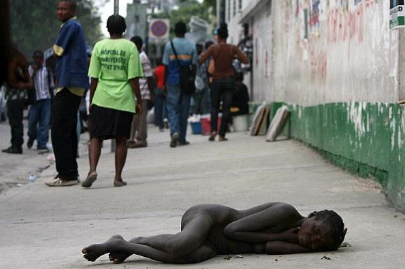Huffington post:
Hundreds or even thousands of lives could be saved every year by improving the ambulance network, or by training paramedics and first aid volunteers, according to new research for Haiti Priorise.
In Haiti in 2013 and 2014, more than half-a-million accidents and emergencies resulted in 9000 deaths. Fewer than two percent were attended by free ambulances.
Improving the emergency response system is a challenge for many developing nations. Trauma patients are six-times more likely to die in low-income countries than in rich ones.
For Haiti Priorise, specialist economists look at different ways to respond to diverse developmental, environmental, and economic challenges. In April, an Eminent Panel of world-class economists and development experts will meet in Port-au-Prince, review the research, and identify priorities for action.
One topic of research is how to reduce the toll of trauma, heart disease and obstetric emergencies through building a stronger ambulance network.
The Haitian ambulance system comprises the free National Ambulance Center (CAN) and two private providers. Free ambulance use is limited by the CAN base’s centralized location in Port-au- Prince, a small number of personnel, limited equipment, mountainous terrain, and fewer than one hundred ambulances.
For Haiti Priorise, Applied Economist at the Ministry of Public Health and Population R. Christina Daurisca has studied the options and found that one approach to this challenge could be to first build an urban ambulance system. This would serve around half of Haiti’s population.
Using Public Investment Project data and 2016-2017 budgets of the National Ambulance Centre, Daurisca examines the costs of setting up 18 urban ambulance centers with 176 ambulances. This would provide 33 ambulances for every million urban inhabitants.
Each ambulance would be served by 9 workers, plus supervisors and a central operations center, for a total cost of 561 million gourdes. Around 2500 lives would be saved every year.
Using cost-benefit analysis – a research method that allows the comparison of social, environmental, and health benefits of contrasting policy options – Daurisca concludes that the reduction in death and injury and improvements to productivity and the economy would be worth nearly 8-times more than the cost.
Creating a nationwide ambulance system that covers the entire country would obviously be the gold-standard policy. But reaching the most remote parts of Haiti would be very expensive.
Adding to the urban network with another 99 ambulances per every million rural inhabitants requires another 569 ambulances. A nationwide ambulance system would save nearly 4,000 lives each year – but for a very high price equivalent to one percent of Haiti’s national budget each year. Because the price is so high, each gourde would only achieve less than three gourdes worth of good.
Our natural reaction is to choose the policy option that saves the most lives. But we must contrast this with other ways to use limited funds – whether it’s expanding childhood immunization, or improving girls’ education, or implementing an electronic voting system.
At the end of the day, not every policy can be pursued at once. Haiti Priorise aims to help shape conversation by highlighting the solutions that can do the most good.
To the challenge of a poor ambulance network, Daurisca identifies an alternative way to reduce the death toll nationwide: educating more paramedics and first responders.
Firstly, this approach means providing several days of first aid training to 27,000 community members such as traditional midwives and teachers. Secondly, 550 professional paramedics would be given ten days of training. The cost would be just 80 million gourdes in the first year, and this would save around 700 lives every year. Each gourde spent will produce 16 gourdes of social good.
Daurisca notes that a combination of an urban network and community training may have the highest absolute benefits.
Any improvements to the ambulance network must be integrated with improvements to healthcare access. Ambulances take patients to hospitals, where cost can sometimes be a factor.
In a country with seismic risk and weather events, expansion of paramedic and first responder training deserves sustained support.
____________________________________________________
COMMENT: HAITIAN-TRUTH.ORG
The author of this article is the guy who says Haiti’s tree cover is really 25%.
Now he analyses the medical situation, suggesting the requirements of Haiti’s emergency response system.
This concept cures one small element, leaving the rest of the disaster untreated. Sort of like putting a small patch on a leaky inner tube, when the rest is ready to pop in a thousand places.
The author obviously never visited our General Hospital which I describe as an abattoir.
There is no point having a huge ambulance service if they only drop their cargo at a near morgue.
Foreigners parachute into Haiti, stay at luxury hotels, make quick trips in and out of situations, then retire to an air-conditioned room to create unreality with their computer.

Very true.
It is a sadness to see people arrive at he hospital and find no help.
A lady bled to death in the front area ignored by Doctors,
People lie on floors with only a newspaper piece between them and tiles.
Filthy, filthy.
No foods, medicine or help.
Ambulances are used for taking stafs to beach.